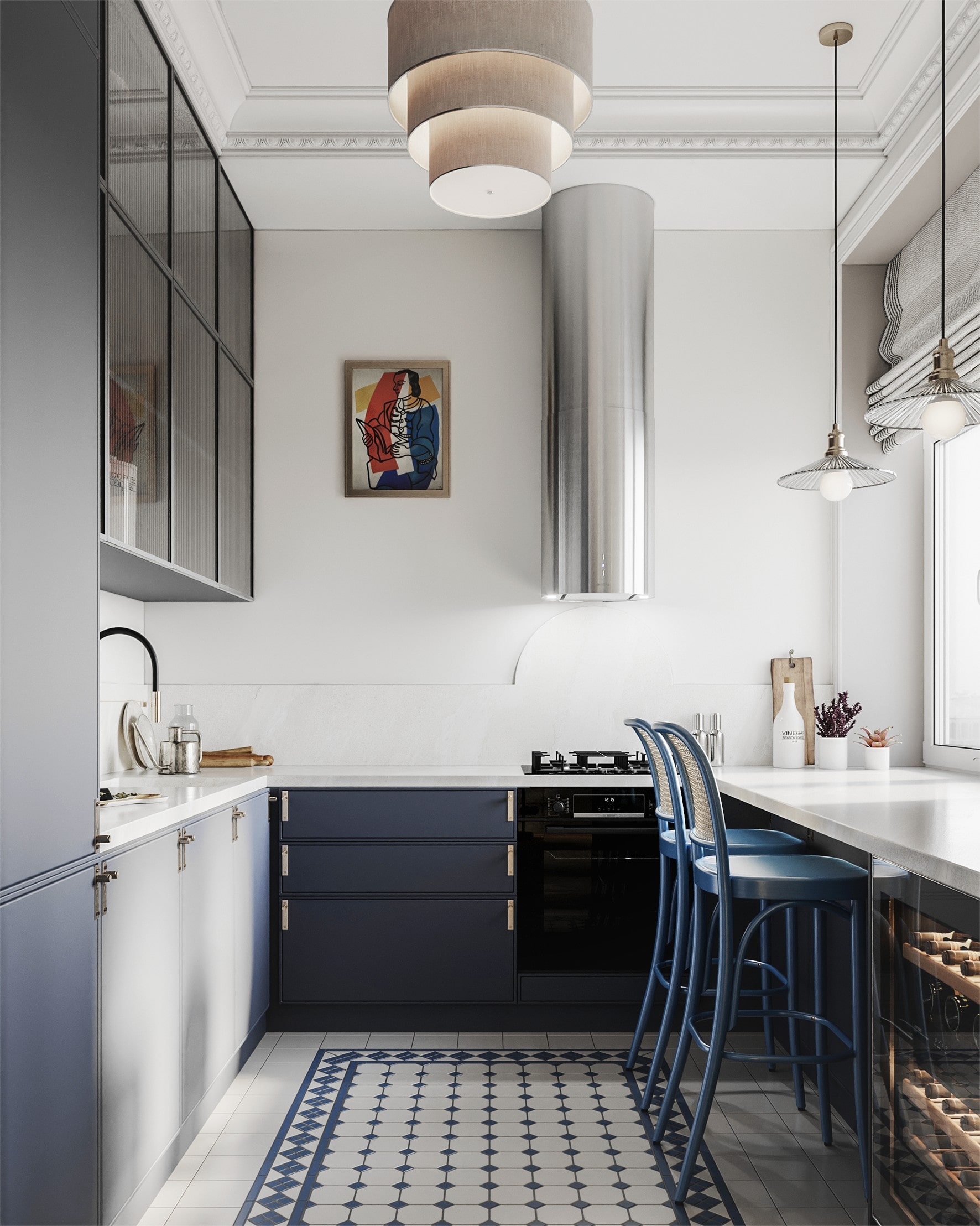AP81
SUVOROVSKY Av.
-
Square
98.5 sq.m
-
Design team:
Dmitry Dubrovsky
-
Client:
private individual
-
Location:
Saint-Petersburg, Suvorovsky Avenue
-
Type:
Apartment
-
Design:
2020
-
Construction:
2020
-
3D-visual
Vyacheslav Korchagin
-
Retouche
Dmitry Dubrovsky

-
Square
98.5 sq.m
-
Design team:
Dmitry Dubrovsky
-
Client:
private individual
-
Location:
Saint-Petersburg, Suvorovsky Avenue
-
Type:
Apartment
-
Design:
2020
-
Construction:
2020
-
3D-visual
Vyacheslav Korchagin
-
Retouche
Dmitry Dubrovsky
The apartment is located in the center of St. Petersburg on Suvorovsky Prospekt. The house is in the style of Neoclassicism with Empire elements, laid out in the year of Stalin's death and designed for the militarians. It was built by order of the General Staff of the Leningrad Military District on the territory belonging to the Nikolaev Military Hospital. The chapel of the hospital is located at the rear facade of the house. It is interesting to note that architect Asis Safovich Urazov was again called up to the Armed Forces in 1953 specifically to design and construct this building. For this purpose, he was appointed head of the architectural department of the VoenProekt Institute.
The apartment has a view of Degtyarny Lane and Nevsky City Hall building on one side and Suvorovsky Prospekt on the other (from the bedroom).
The customers are a family of doctors. The husband is a psychoanalyst, who was educated in France, in Paris, and has spent part of his time there ever since. This is why we have tried to structure the image of the interior so that it brings back memories of his favourite city.
Planning solution
The object has a planning structure typical of the architecture of the Stalinist period. The house has been built of brick with a wall construction system, so the rooms have windows on two facades separated by a load-bearing wall.
We decided to interfere with the existing layout as little as possible and leave the rooms in the size of the current rooms.
We divided the area of the apartment into three functional zones: the living room-kitchen, in the same block there is a bathroom, the children's area with a pantry, and a bedroom-closet. Along the load-bearing wall, going towards the living rooms, we built the main visual axis. The family reads a lot and the owners had a large collection of literature for which they asked for space.
So a library appeared at the end of the hallway, which we integrated as a color accent at the end of the room.
In order to visually reduce the length of the corridor, we divided it into two parts with a transom: a conventional hallway zone and a hallway. Similar constructions were used in the bathroom and kitchen-living room in order to level out the "jumping" height marks and build a clear system of vertical proportions.
The living room overlooks the kitchen. Even though our clients love to cook, we wanted this space to be unified for the sake of airiness and lots of natural light.
In the kitchen, we integrated the kitchen countertop into the window sill and arranged the seating on half-bar stools. You can have breakfast, a cup of coffee or a glass of wine over it. The kitchen furniture was also decorated with an accent color spot.
Finishing
The apartment has breathtaking panoramic views of the center of St. Petersburg. They were the starting point for designing the visual image of the future interior design.
The second basic component for shaping the design was the context.
In our case this is the architecture of the Stalinist period. Inspired by this, we came up with a system of transoms and portals, as elements separating the different functional volumes.
The shade of blue we have chosen for the accents is often used in France, and particularly in Paris, to color elements of the urban environment, for example the doors. In rhyme with this we chose acrylic stone with a texture reminiscent of travertine, which can often be seen on the facades of Parisian houses. To solve the rooms with vertically elongated proportions we developed a horizontal system of partitioning with decorative elements: a high plinth and a molding duplicating it.
The moldings are the same as those we see in the parade rooms and on the facades in the exterior of the building where the apartment is located - we simply transferred them from the exterior to the interior.



















